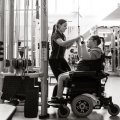A product created by scientists at The University of Queensland could make Chlamydia testing more accessible, particularly to those living in remote areas.
Detailed in the journal Sexually Transmitted Infections is a method of transforming urine into a gel compound, allowing it to be safely sent through the mail to a central testing laboratory.
Lead author Seweryn Bialasiewicz, from UQ’s Clinical Medical Virology Centre, and the Royal Children’s Hospital’s Sir Albert Sakzewski Virus Research Centre, said the gel transport method could make Chlamydia home collection kits more feasible.
“The key to the collection method is the gel’s ability to turn the urine from liquid to a dry solid, thus preventing any leakage in the envelope, even in the unlikely case of the tube holding the gel being breached,” he said.
“The participant collects a small volume of urine into a tube which contains dry gel crystals.
“Once mixed, the gel crystals will quickly absorb all of the water in the urine, turning it into a dry, granular gel.
“The active component of the gel is a super-absorbent polymer in the same family as the compounds used in nappies and the packets found in meat trays.”
Chlamydia is the most common bacterial sexually transmitted infection in Australia which, if left untreated, can lead to infertility.
“Unfortunately, at-risk groups, including Indigenous populations, young people under the age of 25, and men who have sex with men may not have adequate access to Chlamydia testing and treatment,” Mr Bialasiewicz said.
“Frequently, this is due to lack of access to appropriate healthcare facilities, especially in remote areas, an inability or unwillingness to present to clinics for testing and treatment because of the associated stigma, or a combination of the two.”
Mr Bialasiewicz said while home collection kits were not intended to replace traditional screening procedures, they had the potential to increase the participation rate among at-risk groups.
“The kit allows the participant to collect a sample of their urine at home or even in a public toilet, which can then be mailed discreetly through the regular post to a central testing laboratory, thus protecting the individual’s privacy,” he said.
“Additionally, the use of standard post for submission of samples for testing provides more people, especially in the rural and remote setting, an opportunity to be tested and treated.
“After all, the near-ubiquitous post box can be found in even the smallest and remotest of towns.”
The gel transport method was recently trialed using a home collection kit designed by Monika Buhrer-Skinner of the Anton Breinl Centre for Public Health and Tropical Medicine at James Cook University, and Rose Gordon and Joe Debattista of Queensland Health.
“We found that the gel transport method, which the kit was based on, provided detection capabilities equivalent to that of standard Chlamydia testing procedures,” Mr Bialasiewicz said.
Results of the pilot trial are in the process of publication.
Media: Mr Bialasiewicz (07 3636 8719, seweryn@uq.edu.au) or Penny Robinson at UQ Communications (07 3365 9723, penny.robinson@uq.edu.au)


